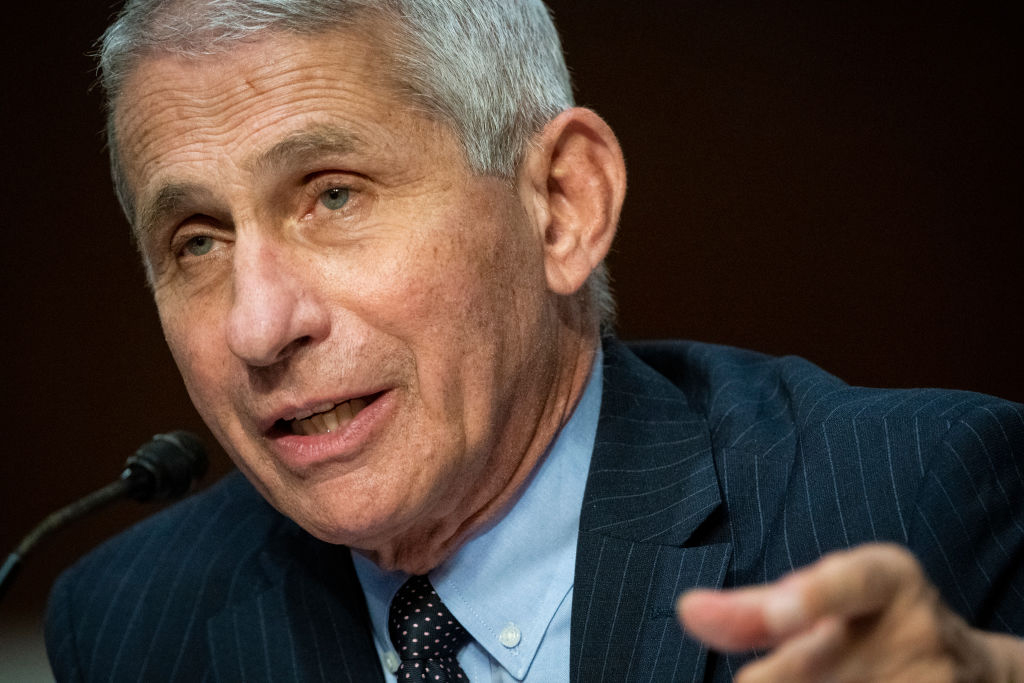Four administration officials testified before the Senate Health, Education, Labor, and Pensions (HELP) Committee with updates on the necessary measures needed to reopen the country amidst the ongoing COVID-19 pandemic. The June 30 hearing followed the officials’ first appearance before the committee on May 12 [see Washington Highlights, May 15].
Committee members questioned witnesses on several topics including updates on the current pandemic burden in the United States; COVID-19 tests, treatments, and vaccines; and public health officials’ recommendations for responding to future pandemics.
Sen. Elizabeth Warren (D-Mass.) asked National Institute of Allergy and Infectious Diseases Director Anthony Fauci, MD, for new projections for the country since the May hearing, noting current infection rates of 40,000 new cases per day.
Dr. Fauci told Sen. Warren he had strong concerns about where the country was headed.
“I'm not satisfied with what's going on because we're going in the wrong direction,” Dr. Fauci testified, regarding the current rate of new cases. “I would not be surprised if we go up to 100,000 a day if this does not turn around and so I am very concerned,” he added.
Sen. Mike Braun (R-Ind.) asked how many individuals need to be vaccinated or have herd immunity before the pandemic is in the country’s rearview mirror. Centers for Disease Control and Prevention (CDC) Director Robert Redfield, MD, responded that an estimated 5%-8% of the U.S. population has experienced the virus, compared to the estimated 70%-85% needed to confer herd immunity. He also testified that hospitalization rates are currently increasing in 12 states.
Both Committee Chairman Lamar Alexander (R-Tenn.) and Ranking Member Patty Murray (D-Wash.) asked about updates on SARS-CoV-2 tests, including capacity and costs, and inquired about guidelines for schools planning to reopen in the fall.
Chairman Alexander noted that Congress will need to clarify who pays for testing in cases other than when a person shows symptoms or has been in contact with someone known or suspected to have COVID-19. Ranking Member Murray shared her frustration that the testing capacity is lower than it needs to be and that the administration’s testing plan lacked detail and arrived too late.

Assistant Secretary for Health Adm. Brett Giroir, MD, also updated members that he is maintaining his role in coordinating testing, including working on the NIH’s Rapid Acceleration of Diagnostics program, while he transitions back to “more traditional duties” as assistant secretary.
On the topic of preparation for school semesters beginning in the fall, Dr. Redfield added that the CDC developed testing guidelines for institutions of higher education. Food and Drug Administration (FDA) Commissioner Stephen Hahn, MD, added that more than one therapeutic option should be available in the fall, based off data from ongoing trials for monoclonal antibody treatments, in response to questions from Chairman Alexander about therapeutic options for teachers, administrators, and older adults.
Ranking Member Murray repeated the need for a national vaccine plan, noting, “We know this pandemic will not end until we have a vaccine that is safe and effective, that can be widely produced and equitably distributed, and that is free and accessible to everyone.”
The FDA recently released its vaccine guidance for industry, and Dr. Redfield testified that the CDC has been working on its vaccine plan for at least 10 weeks, which should be publicly available “in the near weeks ahead.”
Several committee members raised concerns about vaccine hesitancy in the United States and the hindrance it may cause in protecting all Americans from COVID-19. Sen. Lisa Murkowski (R-Alaska) expressed concern that the country may get to a place where there is a successful vaccine but no plan for dealing with those who may have a mistrust of vaccination. Dr. Fauci described a community engagement program already integrated within vaccine trial sites.
“We need to engage the community by boots on the ground … particularly those populations that have not always been treated fairly by the government,” he said.
Chairman Alexander argued that Congress has provided sufficient funds for contact tracers — including funding in the Coronavirus Preparedness and Response Supplemental Appropriations Act, 2020 (P.L. 116-123) and the Coronavirus Aid, Relief, and Economic Security (CARES) Act (P.L. 116-136) — and for states, territories, and tribes to use for preparedness and response efforts [see Washington Highlights, March 6, March 27].
In reference to his recently released white paper on pandemic preparedness [see related story], Chairman Alexander concluded the hearing by asking witnesses what Congress should do now to prepare for the next pandemic.
Dr. Fauci highlighted the need to accept that outbreaks happen and the importance of the nation responding together as a whole in a coordinated, proactive way. Dr. Redfield emphasized the importance of robust investments in public health, echoing testimony of health experts before the HELP Committee on June 23 [see Washington Highlights, June 26]. Adm. Giroir added the importance of data infrastructure in developing timely, well-informed responses, as well as a need to focus on health disparities. Finally, Dr. Hahn added the importance of domestic manufacturing and having redundancy in the supply chain.
The same witnesses also appeared before the House Energy and Commerce Committee on June 23 to testify on the administration’s response to the COVID-19 pandemic [see Washington Highlights, June 26].